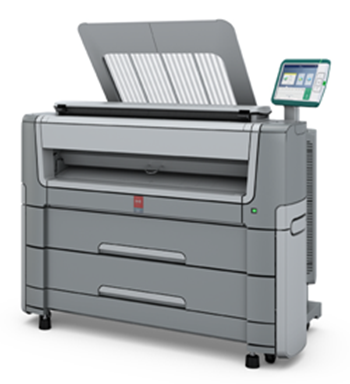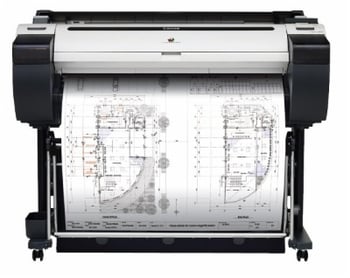If you work in AEC - architecture, engineering, or construction, you know how you handle construction drawings has changed dramatically. Print shops printed and distributed bid sets to general contractors and subcontractors in the old days.
Almost all plans are shared electronically via email or some online planroom. This has resulted in a drop in demand for large-volume printing. Traditional reprographic shops have been hit hardest by this change. But wide-format printing is not dead; it has just shifted.
In many ways, software applications such as Bluebeam have created "paperless" workflows, especially on the front end of a project. More specifically, this is the estimating phase, and many tools are available to do all the work needed on a computer screen.
If any printing is done on the front end, that burden is put directly on the subcontractor bidding on the jobs. So, they now have a choice: print their plans or outsource the work.
There are certainly PROS and CONs for both. But, time value is one element that needs to be included in the cost-benefit analysis. For example, a small mechanical company might outsource its prints to the nearest strip center copy shop.
Sure, it's convenient, and there is no overhead, but what is the actual cost of doing that? If those business owners were honest with themselves, they would realize the time consumed driving to and fro and waiting around.
From this point, AEC companies typically realize there is value in having their plotter/scanner and begin their search for a new wide-format system. But, this can be a daunting task. After all, which technology makes the most sense, inkjet or toner?
Invest in the Right Technology for the Job
Before determining what type of plotter would suit you best, you must thoroughly analyze your needs. Too often, buyers only have one criterion—to buy the least expensive plotter available. While this position is understandable, it isn’t the best business decision. Not to be cliché, but the old adage is true: "you get what you pay for."
The ugly truth is sometimes, when you purchase a plotter based on the lowest price; it can cost you more overall. Printers, small format and large format alike, are designed to function within a specific volume parameter. Once you exceed the limits of that parameter, the maintenance and usage costs will exceed the expense of a more extensive system. So, you must estimate your monthly volume as accurately as possible beforehand.
Fortunately, we have done the hard work for you. Download a copy of our white paper that compares toner vs. inkjet plotter technologies. You can quickly and easily analyze data to determine which printing technology provides the most cost-effective solution to meet your needs.
The True Costs of Wide-Format Printing
Ink Jet Plotters: On the hardware side, these are the least expensive, but they cost considerably more to operate, especially at higher print volumes. Remember the “razor and blades” mentality of the ink jet manufacturers—their business model is built solely on selling consumables. It has even been rumored that HP sells their printers at a loss because they will more than make it up in consumable revenue.
Printer replacement costs should also be a factor in your long-term strategy. Inkjet plotters tend not to be nearly as durable as their toner counterparts. The lifetime expectation of ANY inkjet plotter should be 3-4 years.
LED Toner Plotters: These units are more expensive than their inkjet equivalents. But they make up for the difference in speed, productivity, and durability. For example, Océ wide-format systems are rated for 7-10 years in the field. Keeping a piece of equipment for that long of a term dramatically impacts the equipment's return on investment (ROI).
The one caveat to an LED toner plotter is that they only print in black/white. The new dynamics of BIM and other applications almost demand the integration of color prints.

Final thoughts
New technology is everywhere in AEC. On-screen estimating software, BIM, and new printing technologies are changing many companies' processes regarding printing and distributing large-format drawings.
If there is one common thread with these changes, it is the integration of color information into printed plans. So, do your research, but make sure you identify all the variables and keep your vision far enough ahead to anticipate future changes.
Download our white paper to get more information and custom comparison charts.
Photo credit: Muffet

April 18, 2016


Comments